
How Sony Pictures Put User Experience at the Center of Wi-Fi Optimization

When your network supports high-budget movie productions, “good enough” monitoring isn’t good enough.
Sony Pictures Entertainment operates one of the industry’s most demanding network environments. With over 1,500 access points across their Culver City studio lot alone, their network supports everything from executive meetings to active movie productions. When users can’t connect to critical applications during a high-stakes production or meeting, the impact goes far beyond a simple help desk ticket.
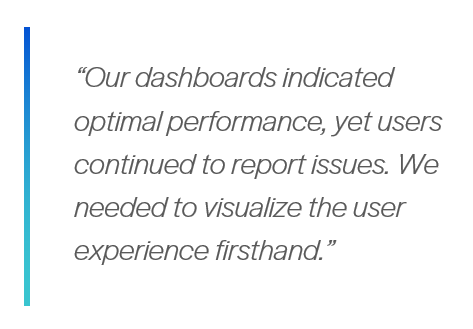
Kelly Harris, Principal Network Engineer at Sony Pictures, knows this reality intimately. After 20 years managing the studio’s network infrastructure, he’s seen how traditional monitoring tools leave IT teams flying blind when it comes to the actual user experience.
“Our dashboards indicated optimal performance, yet users continued to report issues. We needed to visualize the user experience firsthand,” Harris explains.

The Hollywood Network Challenge
Sony Pictures’ network requirements are unlike most enterprise environments. The studio lot hosts multiple simultaneous productions, each requiring isolated network access through dedicated SSIDs. The studio lot might support 15 different network segments at a time.
This complexity extends to the technical infrastructure. Sony’s network supports everything from traditional corporate applications like Microsoft Teams to specialized VR equipment that can “blast over the spectrum” and interfere with wireless signals during production work.
The challenge became more acute after the pandemic, when wireless usage skyrocketed across the organization. “The post-pandemic surge in wireless usage created a pressing need to effectively monitor user traffic and gain real-time insights into performance,” Harris recalls.
From Complex Data to Clear Insights
Sony Pictures already had a Wi-Fi optimization solution in place. It showed them plenty of information, but making sense of it was another story.
“The deployment was difficult, and changing tests was cumbersome,” said Kelly Harris, Principal Network Engineer. “If I replaced switches in a building, I had to go back and rescan everything manually. It took a week to set up a single test properly.”
While the data was available, it wasn’t actionable. The platform required manual work, deep technical digging, and made it difficult to provide business-level insights to leadership.
The turning point came at an industry event, where Harris discovered Wyebot. “I met Wyebot’s CEO, told him what I was looking for, and he showed me the platform,” he said. “I recognized this as a far simpler alternative to our current process.”
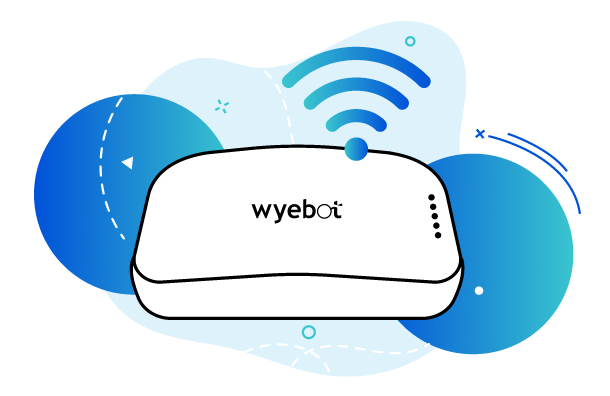
Deploying in Days Instead of Weeks
The contrast in deployment experience was immediate and dramatic. Where Sony’s previous solution required complex network configurations and lengthy setup processes, Wyebot sensors connected automatically to the cloud platform.
“I was genuinely surprised,” Harris emphasizes. “The setup was simple. I just plugged it in, and it connected to the cloud effortlessly, requiring no specific configuration.”
Even Sony’s certificate-based corporate network integration was straightforward. “Putting the cert into the Wyebot was very simple. With the previous tool, it took us a while to get that going.”
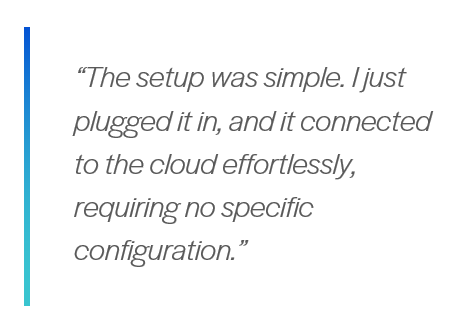
Sony started with a strategic deployment in their executive building, placing sensors in areas where network issues would have the highest visibility. “We started with 10 sensors, one in each area where executives sit. When something comes down, it usually comes from an exec saying something’s wrong. When Wyebot’s sensors are in their area, we can actually see what the issues are.”
The success of this initial deployment led to rapid expansion. Sony is deploying 50 additional sensors across multiple buildings and is actively testing Wi-Fi 6E capabilities in multiple facilities while also preparing for international expansion.
A Proactive Approach to Wi-Fi Performance
The difference in troubleshooting capability became apparent immediately. Where Harris previously spent significant time on site visits and manual diagnostics, Wyebot’s client-side visibility cut his troubleshooting time in half.
“If a ticket comes in from a building where Wyebot is deployed, I go straight to the Wyebot dashboard,” Harris explains. “Before I even troubleshoot the client, I’m on the Wyebot dashboard checking performance and running iPerf tests.”
This proactive approach has proven particularly valuable for Sony’s most common network issues: perceived slowness, SSID connectivity problems, and website access issues. In many cases, Wyebot data helps Harris quickly identify that the issue isn’t network-related at all.
“A lot of times they say there’s a Wi-Fi issue, but it could be they’re connecting to the wrong SSID or their drivers need updating,” Harris notes. “At least I have something I can actually look at and say, ‘No, everything looks good over there. Let’s physically check your device.'”
The synthetic testing capabilities have been particularly valuable for validating Microsoft Teams performance, which is critical for Sony’s distributed workforce. “There’s a lot of emphasis on voice quality and video quality of the Wi-Fi network. With Wyebot I’ve been able to actually dive down and show them the voice quality is 5, the video quality is 4. I can show them performance for the month, the week, the day.”
Shifting Reporting from Spreadsheets to Dashboards
One of Sony’s key requirements was providing meaningful network performance data to executive leadership. Their previous solution required extensive manual work to create presentable reports.
“I had to crunch numbers in Excel to make it look like something,” Harris recalls. “With Wyebot, I can just take a screenshot and say, ‘See, this is the performance for today or any time period.'”
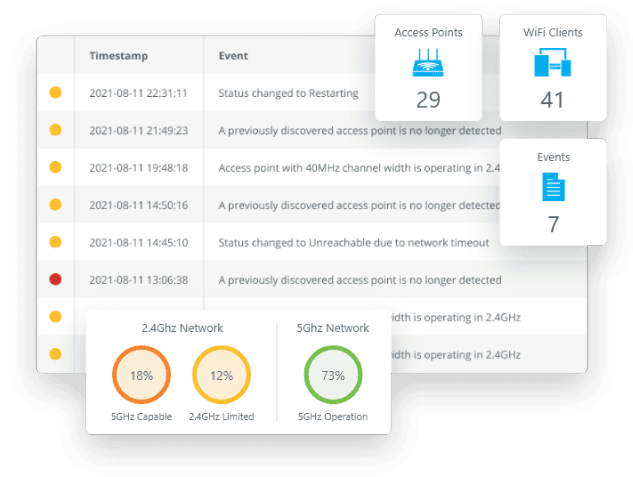
Sony has also integrated Wyebot data into their Power BI infrastructure through API calls, enabling automated reporting to management. The company now provides executives with clear metrics on Wi-Fi performance, including throughput testing, captive portal response times for guest networks, and application performance data.
“We can give them detailed information and drill down,” Harris explains. “We can prove Wi-Fi performance and actually back it up with data.”
Smarter Testing with Multi-Radio Technology
From a technical perspective, Wyebot’s multi-radio sensor architecture provides advanced capabilities for Sony. The sensors can simultaneously perform active testing while passively monitoring the wireless environment, providing comprehensive visibility without requiring separate tools or processes.
“The device automatically scans all the time,” Harris notes. “I can see if something went down and how long it was down.”
This continuous monitoring has been particularly valuable in Sony’s complex RF environment, where VR equipment and other production technologies can cause interference. “It helps us see which spectrum interference is on,” Harris explains.
The company is now testing Wi-Fi 6E capabilities across two buildings, using Wyebot sensors to compare performance between 5 GHz and 6 GHz implementations. “We have comparison data from 5 GHz to 6 GHz, which has been really cool to test so far.”
Lower Overhead with Higher Support Quality
While the sensor hardware costs were comparable to Sony’s previous solution, the total cost of ownership improved significantly. The elimination of professional services fees and the reduction in troubleshooting time provided clear ROI.
“The units are pretty much the same price, but Wyebot does not charge for professional services,” Harris explains. “When I have a support ticket, I just send an email. They respond really quickly and I get much better support than what we were paying for with professional services for our prior solution.”
The Case for Client-Side Visibility
For Harris, the decision to recommend Wyebot to other network engineers is straightforward, though he acknowledges the competitive advantage it provides.
“I would tell them to buy it,” he states simply. “It’s user-friendly, easier to manage, and the information you get is very good. The graphs are very presentable where I can just take a screenshot and present it to management.”
The key insight that changed Harris’s perspective was understanding the value of client-side monitoring versus traditional infrastructure monitoring. “I used to think, ‘Why do I need this? I have my network management and monitoring system where I can see all this information.’ But having Wyebot actually gives you better, more granular data.”
“You can get data from controllers and APs, but how do you present it? You’ve got to crunch things up, create graphs, make sure everything works. With Wyebot, I don’t have to do all that extra legwork. This tool gives me granular insight that actually makes a difference.”
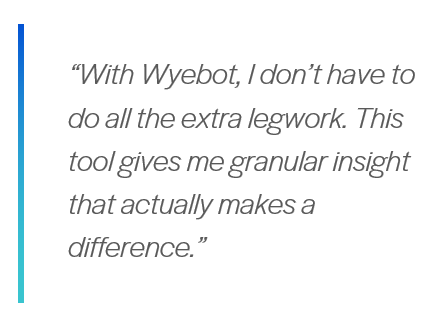
For Sony Pictures, the ability to see their network through their users’ eyes has transformed both their troubleshooting capabilities and their executive reporting. In an industry where every second counts, having clear visibility into the user experience is essential for keeping high-stakes productions on track.
“Wyebot is a Wi-Fi user experience tool. It shows what your users are actually going through,” Harris concludes. “Now when someone says the Wi-Fi is bad, I don’t guess. I can prove what’s happening.”

